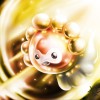PokeCC
I'm starting another project called PokeCC. Basically, it's going to be like the pokemon games(probably more like Gold) in CC. This means you there will be 2 reigions, a giant map for you to explore and beat the gym badges and yadha yadha yadha. But I'd like to know:1. What annoyed the the MOST in pokemon, and what do you think I should do to not repeat this?
2. What features from Pokemon do you really want to see in PokeCC
3. What features that was NOT in Pokemon do you want in PokeCC
You only need to fill out the ones you want, you could do 1 and 3, 3 and 2, 1,2 and 3, etc. etc.
I will also be posting betas, when they're available, here. For the first 3 towns I probably won't give save game converters, you'll simply loose your progress–but seeing as how that probably won't be much it'll be okay. The point is to test, not to play. There is a good chance save games won't become obsolete in the first 3 versions.
Game-Engine
Game-Engine will be a map-based game engine that will allow you to easily make a topviewer or sidescroller with little code. This will make making games a breeze. This is not intended for simple games like pong or 2048. This is for complex games with, well, maps. This will support advanced things such as water, clifts, seamless(no map loading at all) TARDIS-like buildings, collision detection, and multiplayer.Level Editor
NOTE: Major format changes are happening. I'd recommend you'd wait to use this.Thought I'd put this out there for anyone to use. I made a level editor for pokemon. It's not well-written, has global spam, inefficient code, and a confusing UI, but the levels it makes are clean and efficient and all in a single file as a serialized table. You can even have pixels call functions when something that is up to you happens. Anyhow, here it is:
pastebin get QuX6ucKF leveleditor
If you find a minor bug (graphic, rare crash, or something that should be changed because it's confusing) then do NOT report it. If it's a major bug(bad crash that reoccurs, graphical bug that renders the program unusable) then do submit it. But I don't really want to fix bugs in this program. It's a mess and I feel like it doesn't need to be polished.
Note: This has bad blinking when dragging. Not that I'm going to fix it. I'm just telling you. It's also really lagy.
New format(coming soon)
This will work with the bit API. theoriginalbit already explained what colors are what values and what each bit represents, but I'd also like to say something else
Obviously the way saving currently works is serializing a table. The table consists of y tables containing x tables containing that pixel's properties. theoriginalbit designed a way to convert this into 1s and 0s. But, how do I represent the end of a Y table? Simple. Since you cannot have water that is also solid(doesn't even make sense), I will simply pass the color white and solid and water to the converter and use that to represent the end of a Y table, and then, let's say, blue solid water could represent nothing. Any additional data will be stored in a serialized table. Yes, this means there are 2 files per map.
try not to make solid water :)/>






